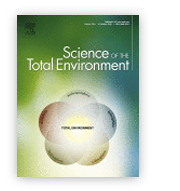Current advances and research prospects for agricultural and industrial uses of microbial strains available in world collections
Uttpal Anand , Anukool Vaishnav, Sushil K. Sharma, Jagajjit Sahu, Sarfaraz Ahmad, Kumari Sunita, S. Suresh, Abhijit Dey, Elza Bontempi, Amit Kishore Singh, Jarosław Proćków, Awadhesh Kumar Shukla
Science of the Total Environment
Ministerial score = 200.0
Journal Impact Factor (2022) = 10.753 (Q1)
 Microorganisms are an important component of the ecosystem and have an enormous impact on human lives. Moreover, microorganisms are considered to have desirable effects on other co-existing species in a variety of habitats, such as agriculture and industries. In this way, they also have enormous environmental applications. Hence, collections of microorganisms with specific traits are a crucial step in developing new technologies to harness the microbial potential. Microbial culture collections (MCCs) are a repository for the preservation of a large variety of microbial species distributed throughout the world. In this context, culture collections (CCs) and microbial biological resource centres (mBRCs) are vital for the safeguarding and circulation of biological resources, as well as for the progress of the life sciences. Ex situ conservation of microorganisms tagged with specific traits in the collections is the crucial step in developing new technologies to harness their potential. Type strains are mainly used in taxonomic study, whereas reference strains are used for agricultural, biotechnological, pharmaceutical research and commercial work. Despite the tremendous potential in microbiological research, little effort has been made in the true sense to harness the potential of conserved microorganisms. This review highlights (1) the importance of available global microbial collections for man and (2) the use of these resources in different research and applications in agriculture, biotechnology, and industry. In addition, an extensive literature survey was carried out on preserved microorganisms from different collection centres using the Web of Science (WoS) and SCOPUS. This review also emphasizes knowledge gaps and future perspectives. Finally, this study provides a critical analysis of the current and future roles of microorganisms available in culture collections for different sustainable agricultural and industrial applications. This work highlights target-specific potential microbial strains that have multiple important metabolic and genetic traits for future research and use.
Microorganisms are an important component of the ecosystem and have an enormous impact on human lives. Moreover, microorganisms are considered to have desirable effects on other co-existing species in a variety of habitats, such as agriculture and industries. In this way, they also have enormous environmental applications. Hence, collections of microorganisms with specific traits are a crucial step in developing new technologies to harness the microbial potential. Microbial culture collections (MCCs) are a repository for the preservation of a large variety of microbial species distributed throughout the world. In this context, culture collections (CCs) and microbial biological resource centres (mBRCs) are vital for the safeguarding and circulation of biological resources, as well as for the progress of the life sciences. Ex situ conservation of microorganisms tagged with specific traits in the collections is the crucial step in developing new technologies to harness their potential. Type strains are mainly used in taxonomic study, whereas reference strains are used for agricultural, biotechnological, pharmaceutical research and commercial work. Despite the tremendous potential in microbiological research, little effort has been made in the true sense to harness the potential of conserved microorganisms. This review highlights (1) the importance of available global microbial collections for man and (2) the use of these resources in different research and applications in agriculture, biotechnology, and industry. In addition, an extensive literature survey was carried out on preserved microorganisms from different collection centres using the Web of Science (WoS) and SCOPUS. This review also emphasizes knowledge gaps and future perspectives. Finally, this study provides a critical analysis of the current and future roles of microorganisms available in culture collections for different sustainable agricultural and industrial applications. This work highlights target-specific potential microbial strains that have multiple important metabolic and genetic traits for future research and use.
DOI:10.1016/j.scitotenv.2022.156641









